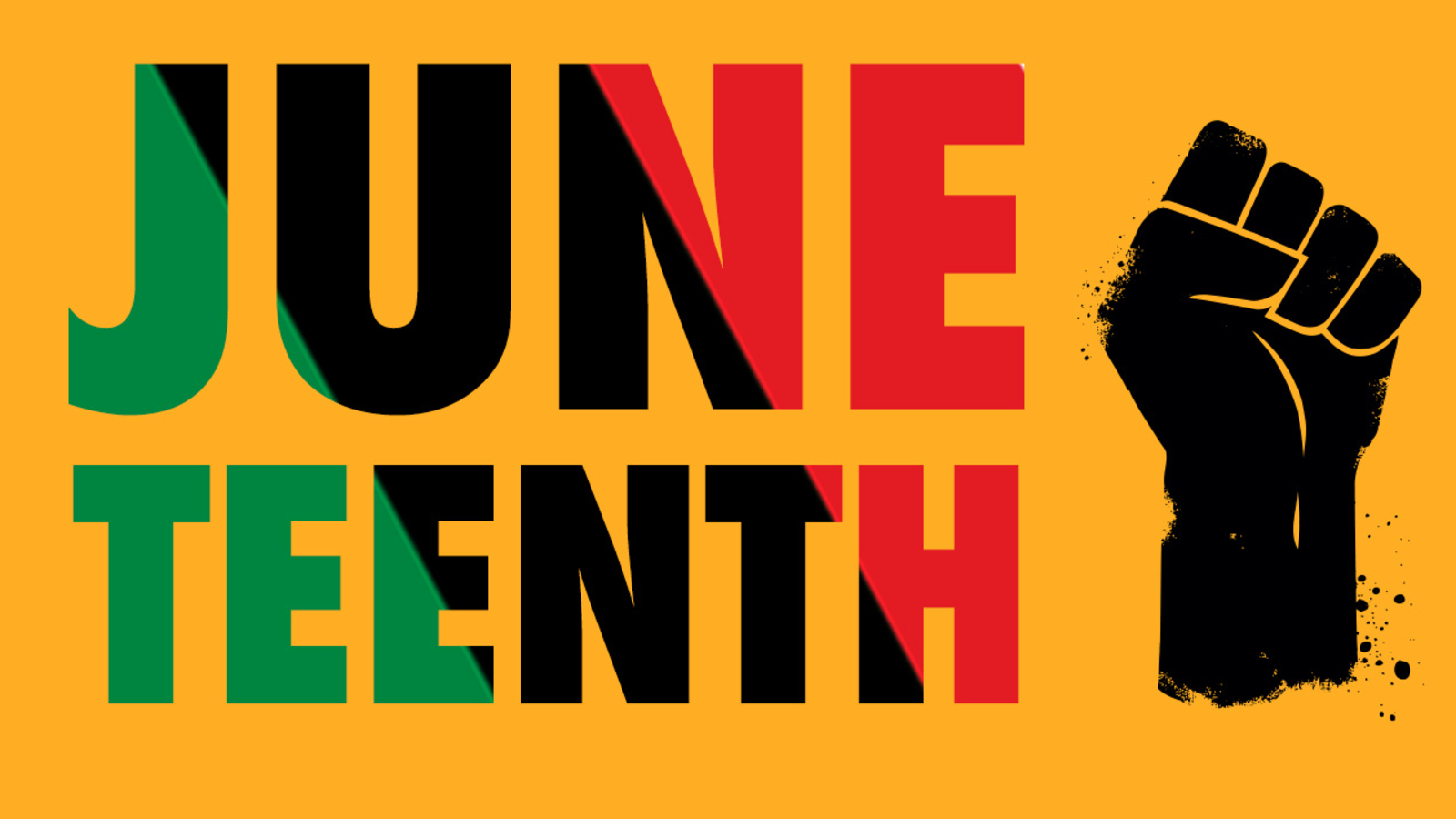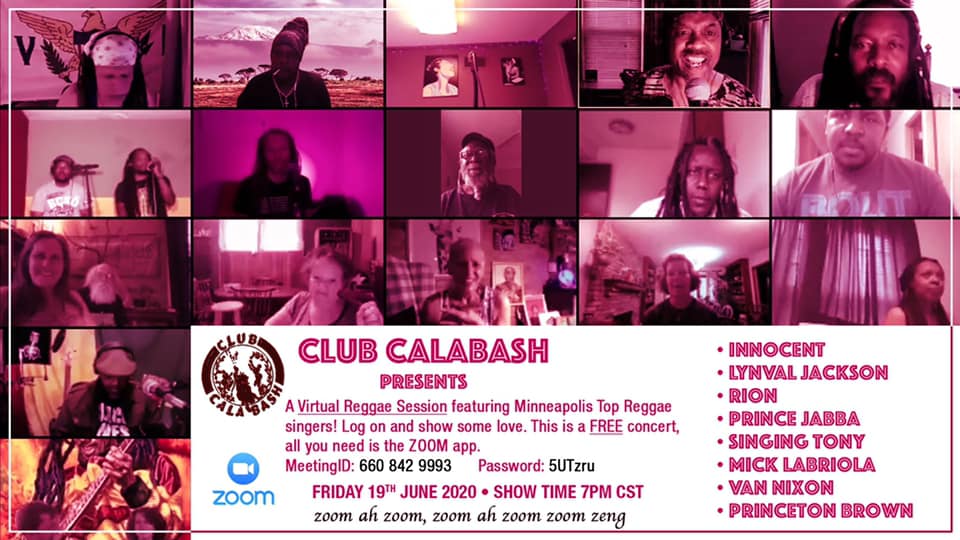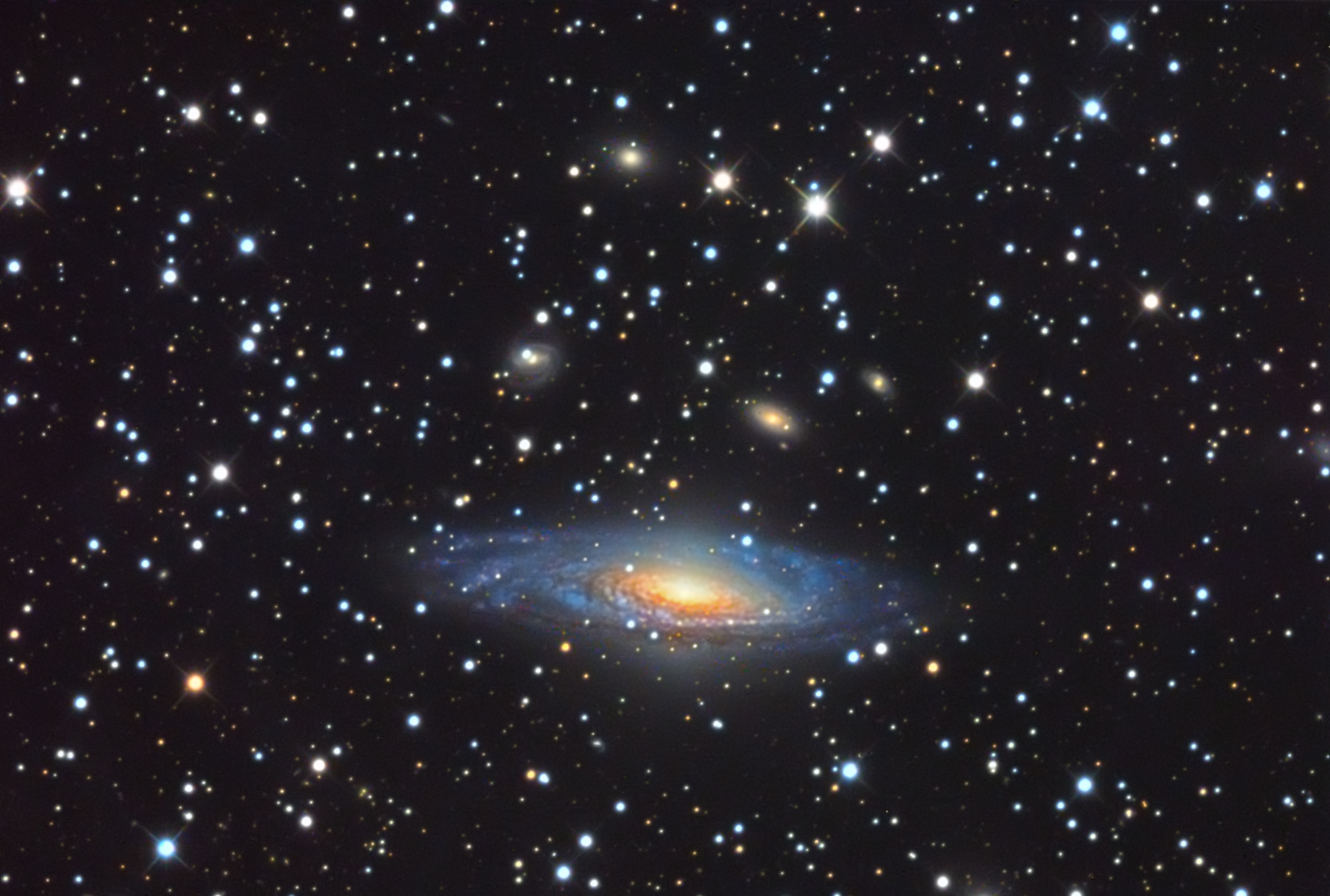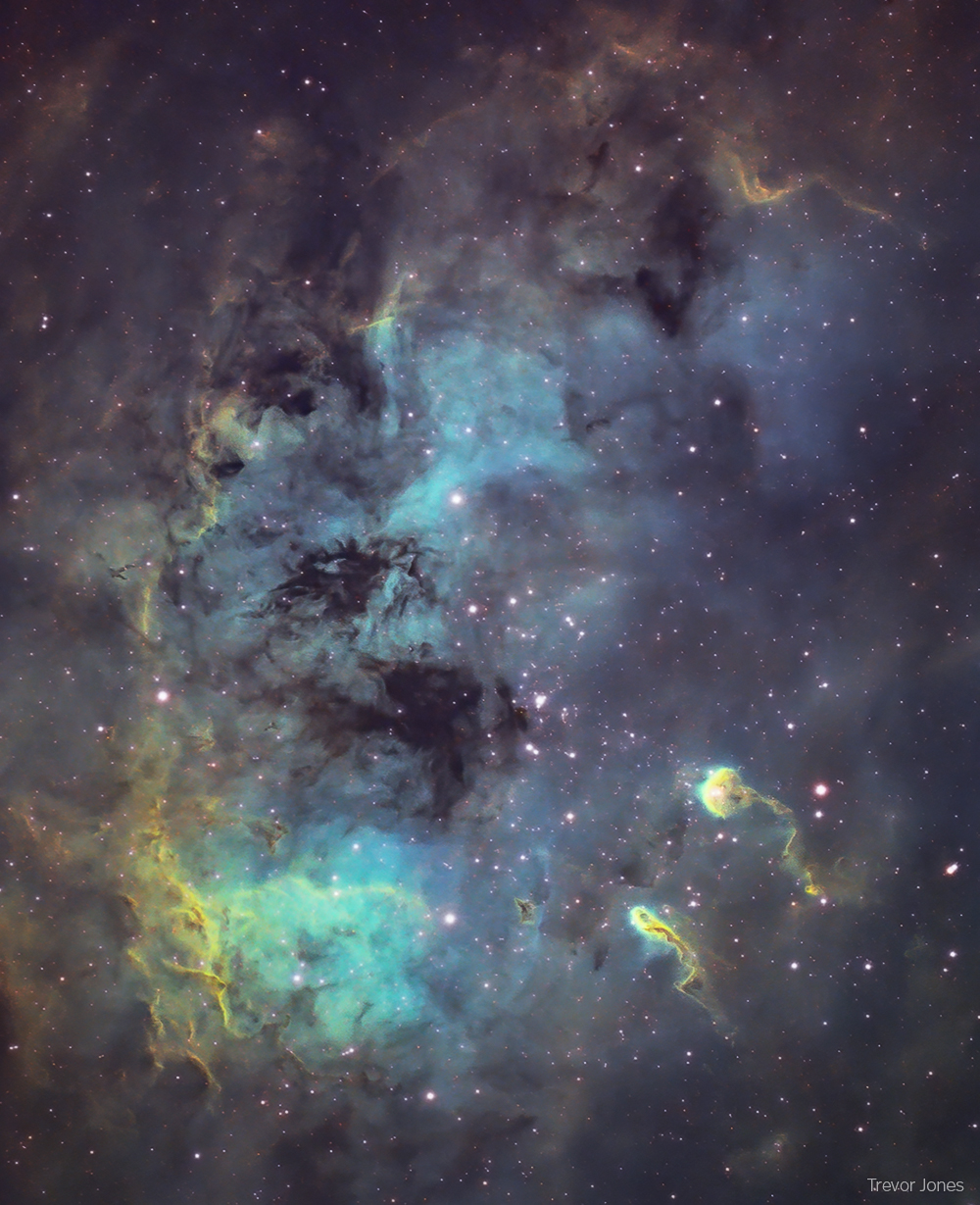Blog
Chester Burton Atkins (June 20, 1924 – June 30, 2001), known as “Mr. Guitar” and “The Country Gentleman”, was an American musician, occasional vocalist, songwriter, and record producer who, along with Owen Bradley, Bob Ferguson and others, created the country music style that came to be known as the Nashville sound, which expanded country music’s appeal to adult pop music fans. He was primarily known as a guitarist. He also played the mandolin, fiddle, banjo, and ukulele.
Atkins’s signature picking style was inspired by Merle Travis. Other major guitar influences were Django Reinhardt, George Barnes, Les Paul, and, later, Jerry Reed. His distinctive picking style and musicianship brought him admirers inside and outside the country scene, both in the United States and abroad. Atkins spent most of his career at RCA Victor and produced records for the Browns, Hank Snow, Porter Wagoner, Norma Jean, Dolly Parton, Dottie West, Perry Como, Floyd Cramer, Elvis Presley, the Everly Brothers, Eddy Arnold, Don Gibson, Jim Reeves, Jerry Reed, Skeeter Davis, Waylon Jennings, and many others.
Rolling Stone credited Atkins with inventing the “popwise ‘Nashville sound’ that rescued country music from a commercial slump,” and ranked him number 21 on their list of “The 100 Greatest Guitarists Of All Time.” Among many other honors, Atkins received 14 Grammy Awards and the Grammy Lifetime Achievement Award. He also received nine Country Music Association awards for Instrumentalist of the Year. He was inducted into the Rock & Roll Hall of Fame, the Country Music Hall of Fame and Museum, and the Musicians Hall of Fame and Museum. George Harrison was also inspired by Chet Atkins; early Beatles songs such as “All My Loving” show the influence.
Atkins was born on June 20, 1924, in Luttrell, Tennessee, near Clinch Mountain. His parents divorced when he was six years old, after which he was raised by his mother. He was the youngest of three boys and a girl. He started out on the ukulele, later moving on to the fiddle, but made a swap with his brother, Lowell, when he was nine: an old pistol and some chores for a guitar.
more...Juneteenth — also known as Freedom Day — has been a tradition in the United States for more than 150 years. The holiday finds its roots in Texas, where enslaved African-Americans in the city of Galveston were finally informed of their freedom on June 19, 1865, about two and half years after President Abraham Lincoln issued the Emancipation Proclamation on Jan. 1, 1863. Participation in Juneteenth celebrations grew throughout the years as descendants continued traditions in Texas and, as African-Americans in the South migrated across the country, Juneteenth celebrations began appearing in different cities.
There has been a surge of attention on the holiday in recent weeks, as the protest movement against police brutality and structural racism toward black Americans gains momentum. Gov. Andrew Cuomo of New York signed an executive order on Wednesday making Juneteenth a holiday for state employees, and companies from Twitter to Target to Nike are observing the day as a holiday or as a day of service. Forty-seven states and the District of Columbia officially commemorate or observe Juneteenth; Texas, which made it a state holiday in 1980, was first to do so.

more...
mick will be doing a Reggae version of a couple of Rolling Stones tunes for this virtual reggae event!

Big, beautiful spiral galaxy NGC 7331 is often touted as an analog to our own Milky Way. About 50 million light-years distant in the northern constellation Pegasus, NGC 7331 was recognized early on as a spiral nebula and is actually one of the brighter galaxies not included in Charles Messier’s famous 18th century catalog. Since the galaxy’s disk is inclined to our line-of-sight, long telescopic exposures often result in an image that evokes a strong sense of depth. The effect is further enhanced in this sharp image by galaxies that lie beyond the gorgeous island universe. The background galaxies are about one tenth the apparent size of NGC 7331 and so lie roughly ten times farther away. Their close alignment on the sky with NGC 7331 occurs just by chance. Seen here through faint foreground dust clouds lingering above the plane of Milky Way, this visual grouping of galaxies is also known as the Deer Lick Group.

Willis Robert “Billy” Drummond Jr. (born June 19, 1959) is an American jazz drummer.
Billy Drummond was born in Newport News, West Virginia, where he grew up listening to the extensive jazz record collection of his father, an amateur drummer and jazz enthusiast. He started playing the drums at four and was performing locally in his own band by the age of eight, and playing music with other kids in the neighborhood, including childhood friends, Roy Wooten, Reggie Wooten and Victor Wooten,[1] who lived a few doors away and through whom he met Consuela Lee Moorehead, composer, arranger, music theory professor, and the founder of the Springtree/Snow Hill Institute for the Performing Arts. He attended Shenandoah College and Conservatory of Music on a Classical Percussion scholarship and, upon leaving school, became a member of a local Top 40 band called The Squares with bass phenom Oteil Burbridge.
In 1986, encouraged by Al Foster, who had invited him to sit in at the Village Vanguard and advised him to take the next step, he moved to New York and almost immediately joined the band, Out of the Blue, with whom he recorded their last album, Spiral Staircase (Blue Note Records). A year later, he joined the Horace Silver sextet, touring extensively with him before becoming a member of Sonny Rollins‘s band, with whom he toured for three years. During this period he also formed long-term musical associations with Joe Henderson, Bobby Hutcherson, Buster Williams, James Moody, JJ Johnson, Andrew Hill, and others.
https://www.youtube.com/watch?v=cNk47u86lNU
more...Robert Allen Palmer (19 January 1949 – 26 September 2003) was an English singer-songwriter, musician and record producer. He was known for his powerful, distinctive, gritty and soulful voice, sartorial elegance and for combining soul, jazz, rock, pop, reggae and blues.
Palmer’s involvement in the music industry began in the 1960s, covered four decades and included a spell with the band Vinegar Joe. He found success both in his solo career and with the Power Station, and had Top 10 songs in both the United Kingdom and the United States in the 1980s. Three of his hit singles, “I Didn’t Mean to Turn You On“, “Addicted to Love” and “Simply Irresistible“, were accompanied with stylish music videos directed by British fashion photographer Terence Donovan.
Palmer received a number of awards throughout his career, including two Grammy Awards for Best Male Rock Vocal Performance, an MTV Video Music Award and two Brit Award nominations for Best British Male Solo Artist. He died aged 54, following a heart attack on 26 September 2003.
more...Ernest Ranglin OD (born 19 June 1932) is a Jamaican guitarist and composer who established his career while working as a session guitarist and music director for various Jamaican record labels including Studio One and Island Records. Ranglin played guitar on many early ska recordings and helped create the rhythmic guitar style that defined the form. Ranglin has worked with Theophilus Beckford, Jimmy Cliff, Monty Alexander, Prince Buster, the Skatalites, Bob Marley and the Eric Deans Orchestra. He is noted for a chordal and rhythmic approach that blends jazz, mento and reggaewith percussive guitar solos incorporating rhythm ‘n’ blues and jazz inflections.
Ernest Ranglin was born in Manchester, Jamaica. His family moved to Kingston, where he attended the Providence Primary School, Kingston Senior School and Bodin College. Ranglin’s introduction to music was through two uncles who both played guitar. Initially a self-taught guitarist; he received some tutoring on how to sight-read from a violin player named Tommy Tomlins. At the age of 15, Ranglin joined the Val Bennett Orchestra, which was followed by a period of employment with the Eric Deans Orchestra. While performing locally with these orchestras Ranglin was introduced to the jazz pianist Monty Alexander, which led to a lifelong friendship as well as numerous musical collaborations.
more...Lester Raymond Flatt (June 19, 1914 – May 11, 1979) was an American bluegrass guitarist and mandolinist, best known for his collaboration with banjo picker Earl Scruggs in The Foggy Mountain Boys (popularly known as “Flatt and Scruggs”).
Flatt’s career spanned multiple decades, breaking out as a member of Bill Monroe‘s band during the 1940s and including multiple solo and collaboration works exclusive of Scruggs. He first reached a mainstream audience through his performance on “The Ballad of Jed Clampett“, the theme for the network television series The Beverly Hillbillies, in the early 1960s.
Flatt was born in Duncan’s Chapel, Overton County, Tennessee, to Nannie Mae Haney and Isaac Columbus Flatt. In 1943, he played mandolin and sang tenor in The Kentucky Pardners, the band of Bill Monroe‘s older brother Charlie. He first came to prominence as a member of Bill Monroe‘s Blue Grass Boys in 1945 and played a thumb-and-index guitar style that was in part derived from the playing of Charlie Monroe and Clyde Moody. In 1948, he started a band with fellow Monroe alumnus Earl Scruggs, and for the next 20 years, Flatt and Scruggs and the Foggy Mountain Boys were one of the most successful bands in bluegrass. When they parted ways in 1969, Flatt formed a new group, the Nashville Grass, hiring many of the Foggy Mountain Boys. He continued to record and perform with that group until his death in 1979. His role as rhythm guitar player and singer in each of these seminal ensembles helped define the sound of traditional bluegrass music. His solid guitar playing and rich lead voice are unmistakable in hundreds of bluegrass standards.
https://www.youtube.com/watch?v=dUnK_3kAUYI
more...Tientos is a flamenco Andalusian palo which has a rhythm consisting of 4 beats. It is in the same family as the Tangos, but slower and with different topics, lyrics and mood. Every Tientos becomes a Tangos at the end of the song/dance.[1] Traditionally, cantaor El Marrurro (1848 -1906) has been considered one of the creators of this style. Enrique el Mellizo gave it the modern form by which we know it today. Other famous cantaores who interpreted this style were Antonio Chacón and Pastora Pavón.
Like many Cante Jondo, traditional Tientos lyrics (letras) tend to be pathetic, sentimental, and speak about the lack of love, disillusionment and revenge. Dancers strive to capture this mood in their solos. It can be danced by a man or a woman.
more...Sweet Honey in the Rock
more...This telescopic close-up shows off the central regions of otherwise faint emission nebula IC 410, captured under backyard suburban skies with narrowband filters. It also features two remarkable inhabitants of the cosmic pond of gas and dust. Below and right of center are the tadpoles of IC 410. Partly obscured by foreground dust, the nebula itself surrounds NGC 1893, a young galactic cluster of stars. Formed in the interstellar cloud a mere 4 million years ago, the intensely hot, bright cluster stars energize the glowing gas. Composed of denser cooler gas and dust, the tadpoles are around 10 light-years long and are likely sites of ongoing star formation. Sculpted by stellar winds and radiation their heads are outlined by bright ridges of ionized gas while their tails trail away from the cluster’s central young stars. IC 410 lies some 10,000 light-years away, toward the nebula-rich constellation Auriga.

Prince Lincoln Thompson, known as Sax (10 July 1949 in Jonestown – 14 January 1999 in London), was a Jamaican singer, musician and songwriter with the reggae band the Royal Rasses, and a member of the Rastafari movement. He was noted for his high falsetto singing voice, very different from his spoken voice.
He began his recording career as a harmony singer along with Cedric Myton of The Congos in 1967 in a band called The Tartans who then split up in 1969. In 1971 he was taken on by Coxsone Dodd, and recorded three songs with him at Studio One called “Daughters of Zion“, “True Experience” and “Live up to your name”. In 1974 he recorded the Humanity album with Cedric Myton, Clinton Hall and Keith Peterkin, and set up the God Sent label. He had two hit singles with “Kingston 11” and “Love the way it should be”.
In 2010, the song, Humanity (Love the way it should be) was covered by American singer John Legend backed by the Philadelphia band, The Roots and is featured on Legend’s album, Wake Up!.
Prince Lincoln received a record deal in 1978, he was signed up by Mo Claridge, who at the time ran Ballistics Records, a London offshoot of United Artists, and who noticed his “eery falsetto”. A single Unconventional people was released as a 12-inch single in March 1979 with the Humanity album following in May. That summer of 79 the Royal Rasses recorded a second Prince Lincoln album, Experience, this time without Cedric Myton. This album contained more than just the traditional drum and bass sound of most reggae. The band renamed themselves the Rasses to avoid confusion with fellow reggae band The Royals to record a further album called Natural Wild in summer 1980. This time the music was made in London. Prince Lincoln’s decision to invite English rock musician Joe Jackson was controversial, and the album was a commercial flop.
more...Carl Dean Radle (June 18, 1942 – May 30, 1980) was an American bassist who toured and recorded with many of the most influential recording artists of the late 1960s and 1970s. He was posthumously inducted to the Oklahoma Music Hall of Fame in 2006.
Radle was best known for his long association with Eric Clapton, starting in 1969 with Delaney and Bonnie and Friends and continuing in 1970 with Derek and the Dominos, recording with drummer Jim Gordon, guitarist Duane Allman, and keyboardist Bobby Whitlock. In 1970 Radle joined Joe Cocker‘s Mad Dogs and Englishmen tour. He worked on all of Clapton’s solo projects from 1970 until 1979 and was a member of Clapton’s touring band, Eric Clapton & His Band, from 1974 to 1979. Radle was instrumental in facilitating Clapton’s return to recording and touring in 1974. During Clapton’s three-year hiatus, Radle furnished him with a supply of tapes of musicians with whom he had been working. Dick Sims and Jamie Oldakerwere the core of Clapton’s band during the 1970s. Radle served as more than a sideman, acting also as arranger on several songs, notably “Motherless Children”. Radle earned credit as an associate producer of Clapton’s album No Reason to Cry.
Radle was a session musician for many of the most famous blues rock and rock and roll artists in the 1970s, including Rita Coolidge and Kris Kristofferson. He appeared in the film The Concert for Bangladesh; recordings from that concert were released as an album in 1972. Over the two-year period before the release of the album The Concert for Bangladesh, Radle recorded albums with Dave Mason, J.J. Cale, George Harrison, Joe Cocker, Leon Russell, and Buddy Guy, among others. He was the bass player in Gary Lewis & the Playboys when they appeared on the Mike Douglas Show. He can be seen in Martin Scorsese‘s 1978 film The Last Waltz, which documented the final concert of The Band, held in 1976.
Over the course of his career, Radle played on a number of gold and platinum singles and albums and garnered the respect of many musicians. His bass lines were often simple and repetitive, but always with the purpose of supporting the song.[2]
Radle was born in Tulsa, Oklahoma, and died at his home in Claremore in May 1980 from a kidney infection, exacerbated by the effects of alcohol and narcotics; he was 37.
more...Sir James Paul McCartney CH MBE (born 18 June 1942) is an English singer, songwriter, musician, composer, and record and film producer who gained worldwide fame as co-lead vocalist and bassist for the Beatles. His songwriting partnership with John Lennon remains the most successful in history. After the group disbanded in 1970, he pursued a solo career and formed the band Wings with his first wife, Linda, and Denny Laine.
A self-taught musician, McCartney is proficient on bass, guitar, keyboards, and drums. He is known for his melodic approach to bass-playing (mainly playing with a plectrum), his versatile and wide tenor vocal range (spanning over four octaves), and his eclecticism (exploring styles ranging from pre-rock and roll pop to classical and electronica). McCartney began his career as a member of the Quarrymen in 1957, which evolved into the Beatles in 1960. Starting with the 1967 album Sgt. Pepper’s Lonely Hearts Club Band, he gradually became the Beatles’ de facto leader, providing the creative impetus for most of their music and film projects. His Beatles songs “And I Love Her” (1964), “Yesterday” (1965), “Eleanor Rigby” (1966) and “Blackbird” (1968) rank among the most covered songs in history.
In 1970, McCartney debuted as a solo artist with the album McCartney. Throughout the 1970s, he led Wings, one of the most successful bands of the decade, with more than a dozen international top 10 singles and albums. McCartney resumed his solo career in 1980. Since 1989, he has toured consistently as a solo artist. In 1993, he formed the music duo the Fireman with Youth of Killing Joke. Beyond music, he has taken part in projects to promote international charities related to such subjects as animal rights, seal hunting, land mines, vegetarianism, poverty, and music education.
McCartney is one of the most successful composers and performers of all time. He has written or co-written 32 songs that have reached No. 1 on the Billboard Hot 100, and as of 2009, had sales of 25.5 million RIAA-certified units in the United States. His honours include two inductions into the Rock and Roll Hall of Fame (as a member of the Beatles in 1988 and as a solo artist in 1999), 18 Grammy Awards, an appointment as a Member of the Order of the British Empire in 1965, and a knighthood in 1997 for services to music. As of 2020, he is also one of the wealthiest musicians in the world, with an estimated fortune of £800 million.
more...Ray McKinley (June 18, 1910 – May 7, 1995) was an American jazz drummer, singer, and bandleader.
McKinley got his start at age 9 working with local bands in the Dallas–Fort Worth area. He left home when he was 15 and played with Milt Shaw’s Detroiters and the Smith Ballew and Duncan-Marin bands. His first substantial professional engagement came in 1934 with the Dorsey Brothers’ Orchestra. It was with the Smith Ballew band in 1929 that McKinley met Glenn Miller. The two formed a friendship that lasted from 1929 until Miller’s death in 1944. McKinley and Miller joined the Dorsey Brothers in 1934. Miller left for Ray Noble in December 1934, while McKinley remained.
The Dorsey brothers split in 1935, with McKinley remaining with Jimmy Dorsey until 1939, when he joined Will Bradley, becoming co-leader. McKinley’s biggest hit with Bradley, as a singer, was “Beat Me Daddy, Eight to the Bar“, which he recorded early in the year 1940 (and for which he got partial songwriting credit under his wife’s maiden name Eleanore Sheehy). McKinley is referred to as “Eight Beat Mack” in the lyrics to the song “Down the Road a Piece,” which he recorded as a trio with Will Bradley and Freddie Slack in 1940. This was the earliest recording of the song, which was written specifically for Bradley’s band by Don Raye.
more...Ray Bauduc (June 18, 1906 – January 8, 1988) was a jazz drummer best known for his work with the Bob Crosby Orchestra and their band-within-a-band, the Bobcats, between 1935 and 1942. He is also renowned for his partial composition of Big Noise from Winnetka, a jazz standard.
Bauduc was born in New Orleans, Louisiana. He was the son of cornetist Jules Bauduc. His older brother, Jules Jr., was a banjoist and bandleader. Bauduc’s youthful work in New Orleans included performing in the band of Johnny Bayersdorffer and on radio broadcasts. His New Orleans origin instilled in him a love for two-beat drumming, which he retained when he played with Bob Crosby’s swing-era big band. In 1926 he moved to New York City to join Joe Venuti‘s band. His other work in the 1920s included recording with the Original Memphis Five and the Scranton Sirens, which included Tommy Dorsey and Jimmy Dorsey.
more...More Posts
- Johnny “Big Moose” Walker Day
- Elmo Hope Day
- Shad Collins Day
- World Music with Eleftheria Arvanitaki
- Daily Roots with Israel Vibration
- The Cosmos with NGC 1187
- Reggie Workman Day
- Big Bill Broonzy Day
- World Music with Very Be Careful
- Daily Roots with Uwe Banton
- The Cosmos with M20
- Joe Chambers Day
- Clifton Chenier Day
- Johnny Smith Day
- World Music with Haig Yazdjian
- Daily Roots with Peter Tosh
- Your Community Band 6-24-18 2pm
- The Cosmos with NGC 7098
- Jeff Beck Day
- Lester Williams Day